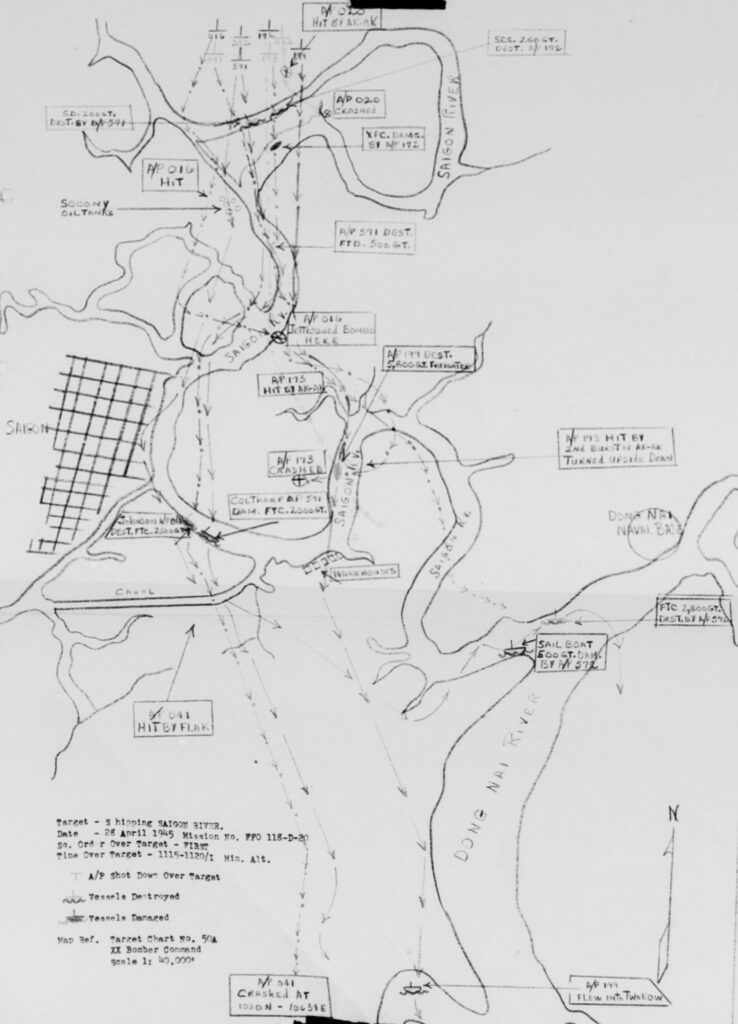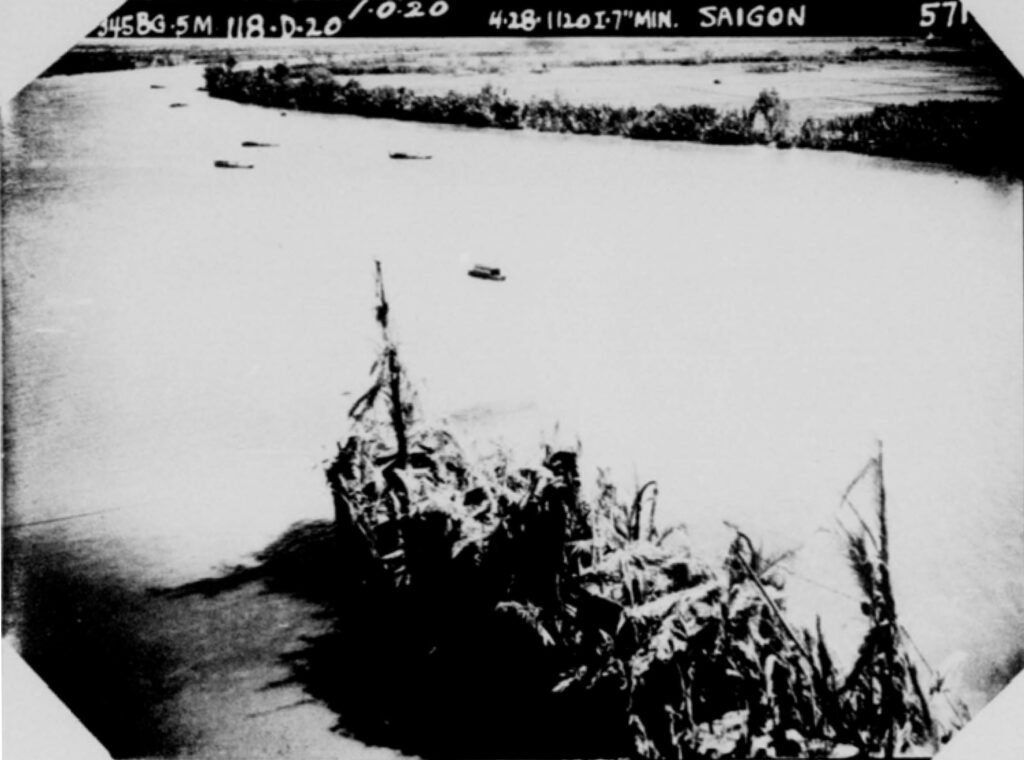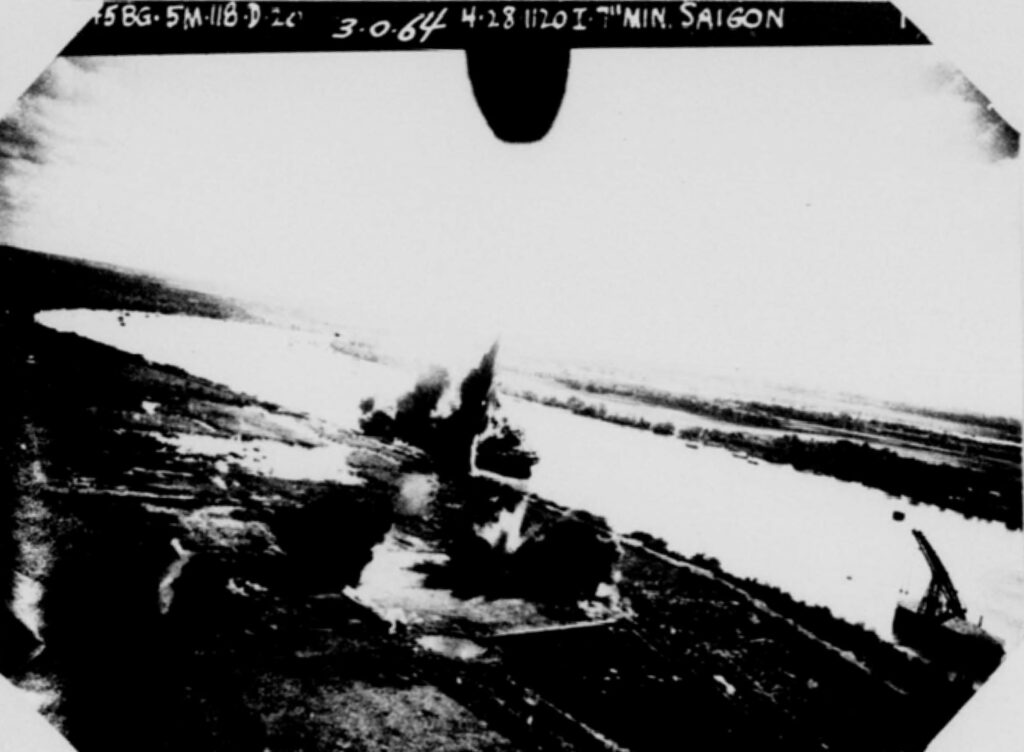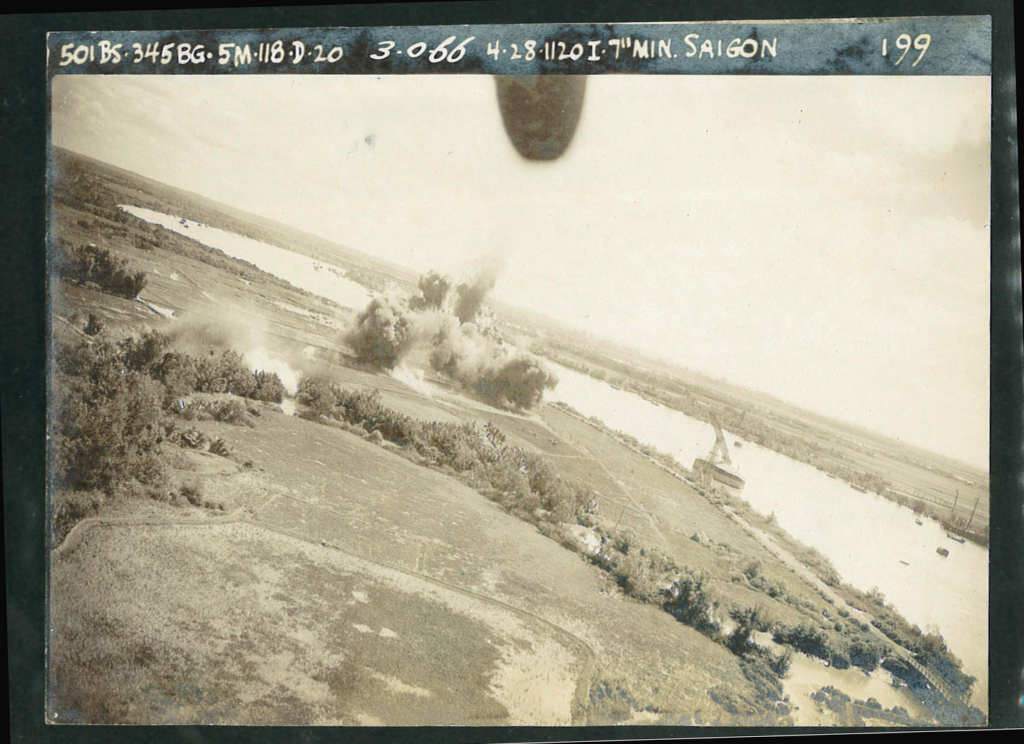An updated interactive map of the April 28, 1945 raid on enemy shipping along the Saigon River by the 345th Bomb Group.
There is a lot of useful information contained in the Unit Histories I received recently from AFHRA. My last two posts were based on documents found within those histories and now I am able to update my June 30, 2020 post that was titled A Bad Day in Saigon.
In that post, the mission report of the 499th Squadron had a map attached and the portrayal of their part of the raid on the Saigon River shipping is still valid. I had to rely on the text of the 501st mission report because there was no accompanying mission map, but now I can correct what I got wrong. This mission was highlighted in the April 1945 squadron history and included a mission map. The map shows the flight paths of the eight airplanes of the 501st, so they are included in the updated interactive map above. The map was spread over two pages and has been photoshopped together to get a full map.

Among the features that required correction were the locations of the warehouses that airplane 199 strafed after bombing the largest freighter and the locations of the sailboat and freighter that airplane 572 destroyed near the mouth of the Saigon River. Most importantly, the location of the airplane 020 crash site is now more accurately located.
Some things that I did get right were the location of the SOCONY tank farm northeast of Saigon, the site of the 500 ton freighter destroyed by airplane 571 south of the SOCONY tank farm, the location of the main wharves where a 2,300 ton freighter transport was destroyed by 041 and a 2,000 gross ton freighter damaged by 571, and the location of the largest freighter bombed by airplane 199. Apparently, efforts to interpret the strike photos were worthwhile.
Grainy copies of several strike photos were included in the squadron history and while they are not as clear as those supplied by Everett Hatcher, they do add to the understanding of this raid and low level bombing tactics in general.
Strike photo 1.0.20, shown below, was taken from a camera in the tail end of Colonel Coltharp’s airplane 571 as it passed over the 500 ton freighter he destroyed south of the SOCONY tank farm. His bomb has already been dropped and has hit the target, but a delayed fuse allows the airplane to clear the target before exploding.

Lt. Blount’s airplane 199 took photo 3.0.60 after he had cleared the 5,800 ton freighter he destroyed east of Saigon. It shows the freighter with the bow pointed downstream, which helped decipher the description of his attack. The direction of flight indicated by the photo agrees with his flight path shown on the mission map.

Photo 3.0.64 from Lt. Blount’s airplane shows the early stages of bombs exploding near the freighter and on shore.

Photo 3.0.66 taken from Lt. Blount’s airplane shows the same explosions progressing as well as the dust and smoke in the near treeline that is presumed to be the crash site of airplane 173.

These new photos allow for some interesting insights into low level bombing. There are several factors of which have become apparent during all this reading: 230 mph is a commonly stated airspeed for B-25’s attacking at low level; after some initial catastrophes involving airplanes being damaged by their own bomb blasts, delayed fuses were introduced; and strike photo cameras were switched on manually at some point during the approach and then took pictures automatically on a preset timer. It would be interesting to learn more about the strike photo camera system so that more information could be derived from the photos.
The 501st mission report does not provide details regarding the delay of their bomb fuses (the 499th was using 4 to 5 second delay bombs) or what the timer settings were on the strike photo camera but in the two photos of Col. Coltharp’s attack on the freighter south of the SOCONY tank farm, there are six frames between his passing over the target and an explosion next to the target. In the photos from Lt. Blount’s airplane, there are four frames between his passing over the target and the appearance of explosions. Two frames later, the explosions have progressed, and those on land in the foreground have obscured the freighter. All of Lt. Blount’s bombs landed in the water or on the freighter, while those of Lt. Towley were in the water near the riverbank and on land. This suggests that the attacks by both airplanes were nearly simultaneous and that six bomb blasts are shown in the photos.
On the interactive map, each flight is designated by a different color. The flight lead has the solid line and the wingman has the dashed line. Targets are designated with the red dots and each has an associated popup with identifying information.
